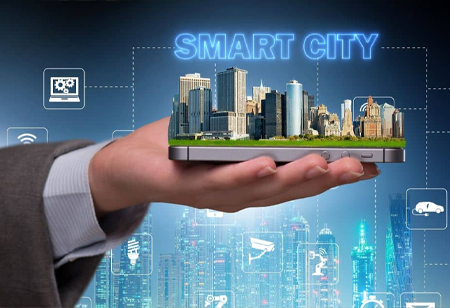
We the people of 21st century have witnessed the digital revolution and the invention of computer. People of today became smart by getting in touch with smart phones which has brought the whole world into their grip. As the days are progressing, more number of people will be shifting towards urban life where all the facilities and amenities can be availed easily. The UN predicts that by 2050 the world’s urban population will be equivalent to the global population back in 2002. The opportunities that cities provide for economic, social and creative growth continue to draw people to them, resulting in large cities being more productive than rural areas and higher returns on capital. The idea of urban innovation is related to the highly in-fashion term ‘smart’ and from there the concept of smart city silently induced urban innovation. It majorly caters to provisions, solutions, and ways of addressing the challenges associated with major cities.
A smart city is a city where humans, trees, birds and other animals can grow with all their glories, imperfections, freedom, and creativity. — Amit Ray
With each passing day, the urban landscape is blending with its rural counterparts to expand it horizons. Further, to accommodate such a huge population, cities are merging with rural areas; thereby cutting down the greeneries is increasing day-by-day. Cities experiencing the fastest growth are struggling to adapt to it, stifling under the weight of pollution, congestion and urban poverty. Urban operations are creating global challenges such as climate change, water and food scarcity, and resource shortages. The incidents of Bhopal Gas tragedy is the burning example how uncontrolled industrialization became a suicidal bomb in itself and demolished the trace of a lively cityscape silently.
Where there is smart vision with innovation, there will be a smart nation!!
Smart City
After witnessing so many fatalities and calamities people started becoming aware of the environment and started taking care of it. Since the urban setting is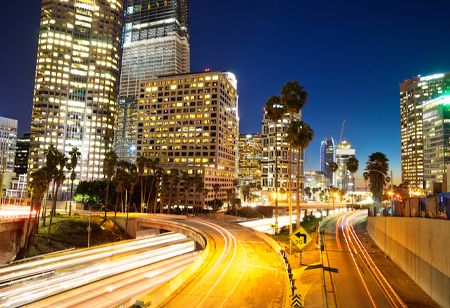 becoming increasingly relevant with its growth and global threats, the new technologies developed in these areas offer a horizon of sustainability. The word ‘Smart City’ is becoming a buzzword just like smartphone. The concept of both smart city and smart phone mingle somewhere, as they both are making the most effective use of information and communication technology. Governments around the world have recently adapted and improved wireless technologies to develop better infrastructure and facilities for their residents.
becoming increasingly relevant with its growth and global threats, the new technologies developed in these areas offer a horizon of sustainability. The word ‘Smart City’ is becoming a buzzword just like smartphone. The concept of both smart city and smart phone mingle somewhere, as they both are making the most effective use of information and communication technology. Governments around the world have recently adapted and improved wireless technologies to develop better infrastructure and facilities for their residents.
Today’s urbanization deliberately needs optimization, because 2 out of 3 people live in cities. According to C40 75% of all global energy consumption occurs in cities. So, the concept of smart city is the panacea of all major challenges we are facing. With the help of science and technology cities can improve its infrastructure, share information with the public and provide a better city living experience. Smart cities are being constructed with the increased use of new technologies, so that cities can create more sustainable and efficient operating methods.
Smart City Technologies
Smart cities are implementing smart technologies in everything from street lamps and drones to robotics and building information modeling (BIM). The growth of the Internet of Things (IoT) is what makes smart cities smarter. IoT describes the network of physical objects that use sensors, software, and other technologies to connect and exchange information with other systems by using the internet. Smart cities use such devices to collect and analyze data to improve infrastructure, public utilities, government-provided services, and the overall city life experience. The value of IoT in smart cities is expected to reach $735 billion by 2030, proving that cities are eager to embrace new technology that promotes sustainable growth.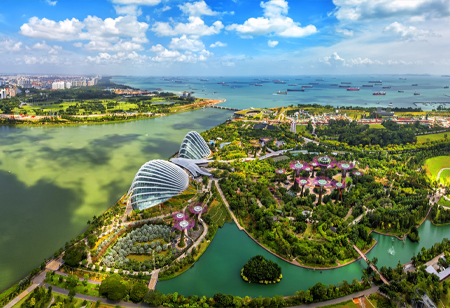
Building Information Modeling: It is a highly collaborative process that allows architects, engineers, real estate developers, contractors, manufacturers, and other construction professionals to plan, design, and constructs a structure or building within one 3D model. Using required data it can scan the operation and management of building or any structure and then pass on to governments, municipalities, and property managers and based on the data and information building is constructed. It allows all stakeholders involved in a project, such as architects, engineers, contractors, and owners, to collaborate on a shared digital platform, facilitating the exchange of information and improving communication. It helps to reduce errors, rework, and waste, resulting in cost savings and improve project outcomes. It can identify maintenance needs, optimize system performance, and extend the lifespan of infrastructure assets. Most importantly, BIM can be used to design energy-efficient buildings and infrastructure systems, as well as to manage the performance of these systems over time.
Robotics & Automation in Smart City: Automated mobility is the idea of using computer-controlled vehicles to transport passengers and goods around a 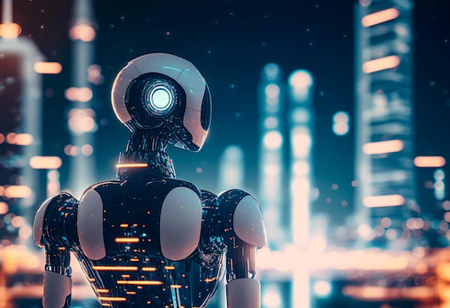 city, providing a safer, more efficient, and more sustainable way to move around. Robots are capable of performing tasks 24 hours a day, seven days a week, with no need for breaks or rest. Robots can be used efficiently to redefine the foundation of public safety, connect the governments and businesses to work more efficiently and effectively in protecting citizens and their property. Robots can be programmed to detect suspicious activity and report it to law enforcement, as well as identify potential threats such as weapons or explosives. This can help to ensure that public places are safe and secure.
city, providing a safer, more efficient, and more sustainable way to move around. Robots are capable of performing tasks 24 hours a day, seven days a week, with no need for breaks or rest. Robots can be used efficiently to redefine the foundation of public safety, connect the governments and businesses to work more efficiently and effectively in protecting citizens and their property. Robots can be programmed to detect suspicious activity and report it to law enforcement, as well as identify potential threats such as weapons or explosives. This can help to ensure that public places are safe and secure.
Robotic Automation can work efficiently with waste processing. Automation could be used to help cities identify and target sources of unnecessary waste production, such as by providing automated alerts when specific waste streams exceed a certain threshold. Smart cities are leveraging numerous cutting-edge technologies to improve the quality of life and efficiency of operations. Robotics are doing wonder in the field of energy efficiency, as the ‘Smart grids’ are now incorporating robotic systems to collect and analyze data in real-time, allowing them to adjust to changes in demand. This process helps the smart cities to reduce their reliance on fossil fuels.
Capra Robotics is a Denmark based company, which has produced smart city robots having potential to improve city operations by defrosting pavements and collecting litter, optimizing resource allocation and service quality for both public and private entities.
Drone Application in Smart City: When it comes to urban planning, drones can be used in mapping and surveying large areas of land in a fraction of time using traditional methods. ‘Gotham Greens’ a new window’ hydroponic greenhouse in Brooklyn was built on the rooftop of Whole Foods Market. With this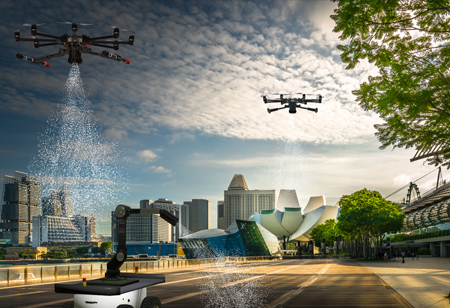 tremendous successful application of latest technique, this farm became the first commercial-scale greenhouse farm integrated into a supermarket. Here the actionable Drones helped immensely the decision-makers to identify untapped areas to be used to create green spaces and introduce more ecological initiatives. Autonomous drones equipped with sensors and cameras can collect large amount of data in real-time, streamlining the construction process. Autonomous drones can create 3D models from scans, providing valuable insights into renovations, retrofitting and inspections. Automatic drones can offer a safer alternative for manual inspections, reducing the risk of accidents and increasing site safety. As urban spaces continue to grow and evolve, drones have the potential to become a major disruptor in how cities operate, making them smarter, more efficient, and better prepared for the challenges of the future.
tremendous successful application of latest technique, this farm became the first commercial-scale greenhouse farm integrated into a supermarket. Here the actionable Drones helped immensely the decision-makers to identify untapped areas to be used to create green spaces and introduce more ecological initiatives. Autonomous drones equipped with sensors and cameras can collect large amount of data in real-time, streamlining the construction process. Autonomous drones can create 3D models from scans, providing valuable insights into renovations, retrofitting and inspections. Automatic drones can offer a safer alternative for manual inspections, reducing the risk of accidents and increasing site safety. As urban spaces continue to grow and evolve, drones have the potential to become a major disruptor in how cities operate, making them smarter, more efficient, and better prepared for the challenges of the future.
IG Drones is the India’s leading Enterprise Drone Solution provider which is offering extraordinary drone services for power line rimonitong, road inspection, smart city, mine survey, industrial survey, pipeline survey, agricultural survey, railway survey, river mapping, and disaster management.
Smart City Mission: It was launched by the Honorable Prime Minister on 25 June, 2015. This mission is an urban renewal and retrofitting program by the 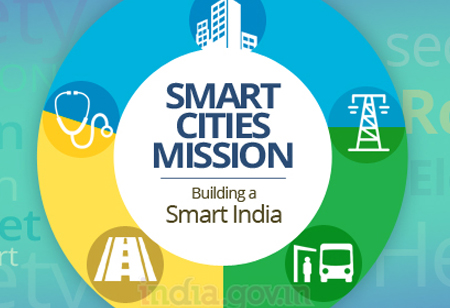 Government of India with the mission to develop smart cities across the country, making them citizen friendly and sustainable. Till date, 6188 out of total 7960 tendered projects have been completed, utilizing ₹113,721 crores out of total tendered amount of ₹171,432 crore. The key focus of this mission is on sustainable and inclusive development and the idea is to look at compact areas, create a replicable model which will act like a light house to other aspiring cities. The Smart Cities Mission is meant to set examples that can be replicated both within and outside the Smart City, catalyzing the creation of similar Smart Cities in various regions and parts of the country.
Government of India with the mission to develop smart cities across the country, making them citizen friendly and sustainable. Till date, 6188 out of total 7960 tendered projects have been completed, utilizing ₹113,721 crores out of total tendered amount of ₹171,432 crore. The key focus of this mission is on sustainable and inclusive development and the idea is to look at compact areas, create a replicable model which will act like a light house to other aspiring cities. The Smart Cities Mission is meant to set examples that can be replicated both within and outside the Smart City, catalyzing the creation of similar Smart Cities in various regions and parts of the country.
Top 2 Smart Cities Around the World
Singapore is the on the top of the list of smart city in 2023. This city has introduced a wide range of smart technologies in both its public and private sectors. From contactless payment, seamless transportation for more than 7.5million people, digital health system, wearable IOT devices, everything is automated and real time data driven. Singapore in 2021 announced its plans for a new eco-smart city that is entirely vehicle-free. This well planned forest city will be home to five residential districts with 42,000 houses, as well as safe zones for both pedestrians and cyclists. Helsinki, Finland planned to achieve the status of carbon neutral by 2035, and gradually they are going ahead to that mission. It is working towards reducing traffic emissions by 69% within three decades by 2035, by transitioning the entire city bus fleet to electric and expanding its Metro and electric car charging networks. They are focusing on energy-efficient measures which can cut down the emission level to 80 percent.
Top 2 Smart Cities in India
Indore achieved the title of ‘Best Smart City’ in India at Smart Cities Conclave 2023. This remarkable achievement was awarded after it was ranked as the.jpg) country’s cleanest city five times. The list is followed by Surat as the second and Agra secured the third spot to achieve Best Smart City award. These cities are efficiently using modern infrastructure based on high technology, Artificial Intelligence, Machine Learning and Sustainable City Plan.
country’s cleanest city five times. The list is followed by Surat as the second and Agra secured the third spot to achieve Best Smart City award. These cities are efficiently using modern infrastructure based on high technology, Artificial Intelligence, Machine Learning and Sustainable City Plan.
Dholera is India’s first planned smart city project covering 900 sq. km, is all set to be the next prime location and global manufacturing hub of Gujarat. Dholera is not part of the flagship "100 smart cities programme". It was designed by UK-based global consultancy firm Halcrow in 2010. The first phase of this project will be completed by the end of 2023.
Last Note
Countries, towns, cities, and governments around the globe have realized the potential and impact of smart cities on nation. With passing time, it became evident that, smart city mission has somehow could not keep its promises and contribute Environmental, Social, and Governance (ESG) and Sustainable Development Goals (SDGs). Investment in smart cities is rapidly growing, as global spending on these revolutionary initiatives and digital technologies are expected to hit $2.6 trillion worldwide by 2026. The smart city technologies are becoming quintessential to thrive and support a healthy, ever-growing population. India needs reevaluation of the project which prioritizes the well-being and inclusivity of the citizen and environment more.
We use cookies to ensure you get the best experience on our website. Read more...
Copyright © 2026 HomesIndiaMagazine. All Rights Reserved.